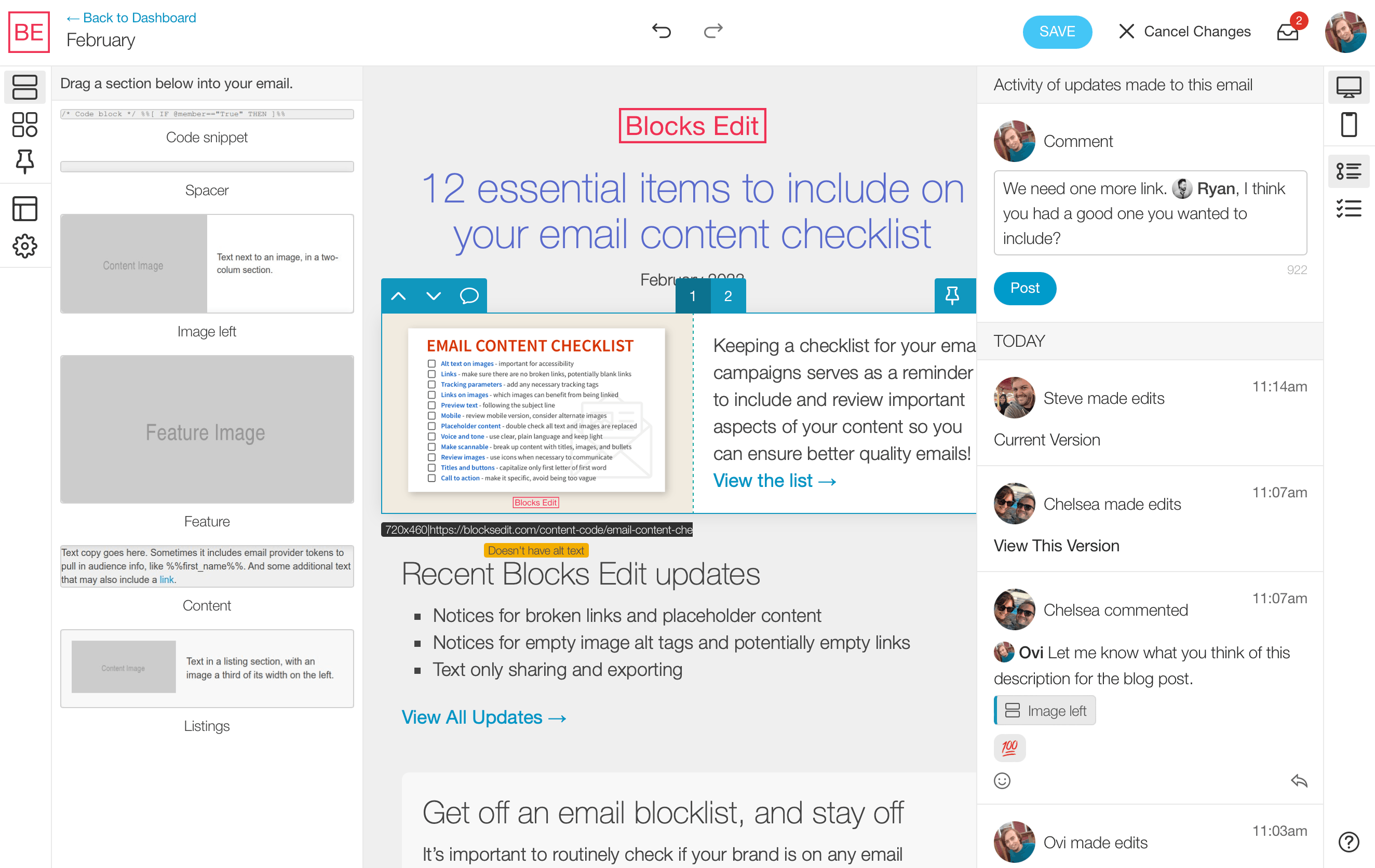

Short answer: it comes down to varying degrees of limitations. The long answer is more nuanced, based on the level of design quality you’re going for and how HTML output works.
Different types of visual editors will be limited in how you can adjust your design, which in turn also affects the overall quality that you're able to get to.
Visual content editors, for both web and email, typically fall into two categories. Editors based around a predesigned template with limited customization options. These are usually found in various marketing platforms that include a content editor. And, visual builders that allow building designs from scratch. These typically offer many more design options.
Some editors fall on a spectrum somewhere in-between these two categories. This spectrum of options is an indicator of the level of flexibility you have with your design. With editors based around templates having the least flexibility, and design builders having some more. The ultimate flexibility, and what also leads to the best quality, is custom coded HTML/CSS for your designs.
You can do a lot with HTML/CSS. When used correctly, they are very flexible to design needs. However, to fully utilize this flexibility, each design requires its own nuanced approach that can make its production feel more like an art rather than structured programming. This is where visual editors and builders hit a wall and end up having to either limit your design, or having to output a lot of extra code to attempt to get closer to your the design.
Often times both of these things occur. This is how you end up getting very rigid designs where there is a feeling of sameness across certain websites that are built using the same platform. Or the output is bloated HTML/CSS code that affects your site's performance, accessibility, and long-term maintenance requirements. The only way to avoid the above is by setting up your custom code in a CMS that works around your code.
Blocks Edit is a CMS that utilizes custom code and allows building visually from that code. Editable options are added around custom components code, so it doesn’t interfere with your design as you’re working on content, and makes future updates to it easy to manage.

With the visual editor, you can drag and drop components and edit content in a simple interface any team member can use without worrying about messing something up. With design quality kept consistent. And it’s platform agnostic, so you're not locked into any single platform.
Don’t make quality a trade-off!